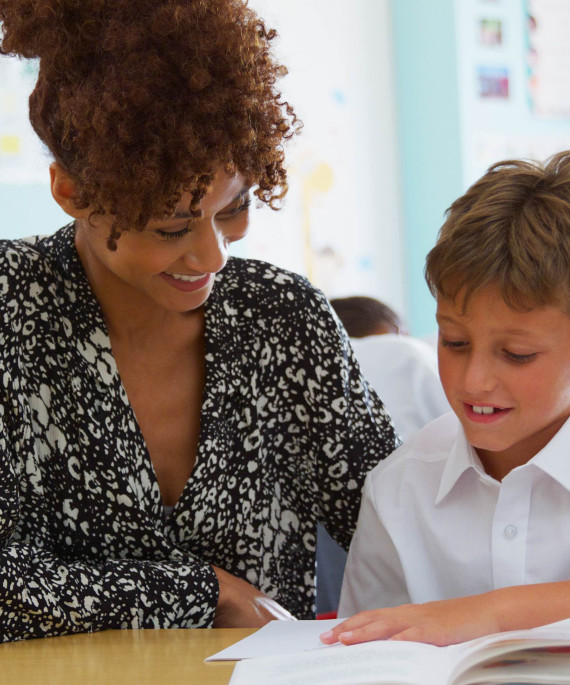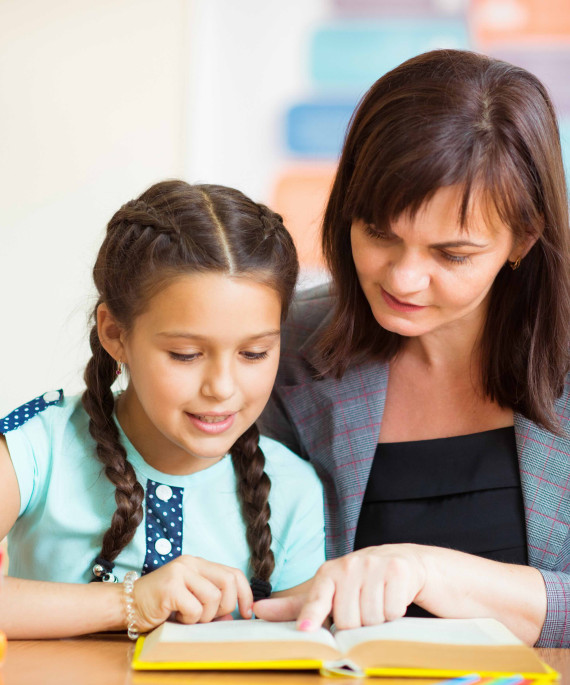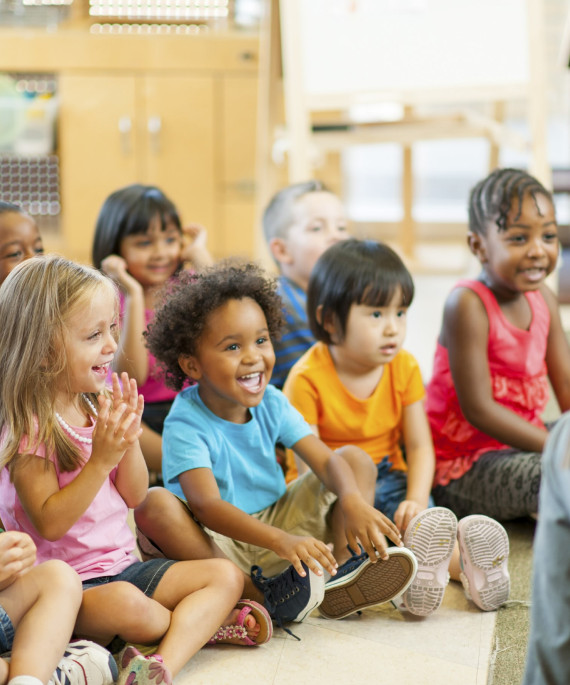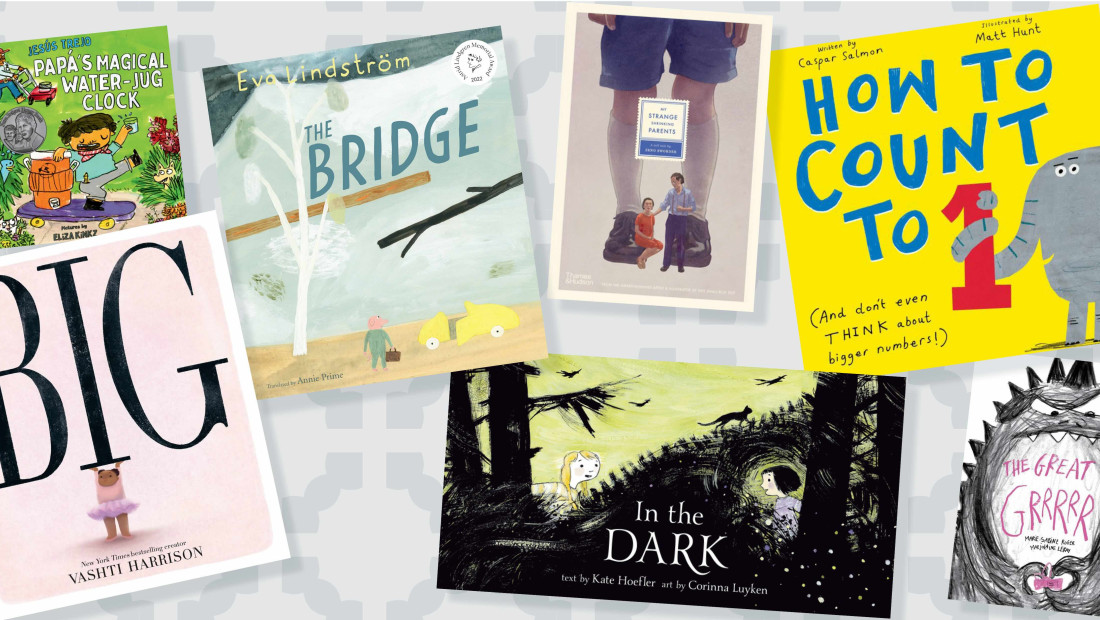
For a daylong event with five award-winning children’s book authors, check out the college’s Excellence in Children’s Literature: The Ohio State University Newbery Award Symposium, coming in November.
Each year, I curate a list of my favorite books to share with teachers at a national literacy conference (LitCon) and with literacy coaches at Ohio State’s Literacy Collaborative professional learning sessions. I visit the library every week, checking out hundreds of books across the year, reading a wide variety of genres, formats and topics.
My very favorite picturebooks are those that promote deep thinking. It is not uncommon for people to underestimate the power of picturebooks for fostering complex meaning-making. Such books leave gaps that invite readers to think creatively and critically as they work to make sense of the story and what it might mean for their lives.
Much of education today focuses on narrow questions with one right answer, leaving students few opportunities to think strategically. The picturebooks featured in this story offer a range of possible interpretations, developing readers’ ability to think widely and deeply about texts.
Big
Written and illustrated by Vashti Harrison. Little, Brown Books for Young Readers, 2023.
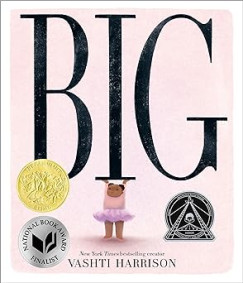
Big tells the moving story of a young girl who navigates unkind words and unwanted advice about the size of her body. Over time, she begins to internalize these messages, and the space on each page closes in on the girl until she fills them entirely.
In a powerful moment of self-love, she gathers up the hurtful words, pushes the gatefolds of the book open to reveal a breathtaking four-page spread, and gives the words back. Empowered, the girl takes up the space that is her right, surrounded by positive words that describe who she is as a person, not her body.
The digital and chalk pastel illustrations, along with the book’s creative design, resonate with complex expressions and emotions. In a note at the end of the book, the author shares experiences from her own childhood journey to self-acceptance, along with a sensitive examination of anti-fat bias.
Big was named a Coretta Scott King Author and Illustrator Honor book and a Best Book of the Year by Booklist, Kirkus Reviews, Publishers Weekly and School Library JournaI. Big was also a National Book Award finalist and a New York Times Best Children’s Book of the Year.
This award-winning picturebook offers readers opportunities to think about how the girl is treated and how she responds to the negative messages from those around her. Themes such as body image, the power of words and fat justice offer students rich topics to discuss.
In the Dark
Written by poet Kate Hoefler, illustrated by Corinna Luyken, Knopf Books for Young Readers, an imprint of Penguin Random House, 2023.
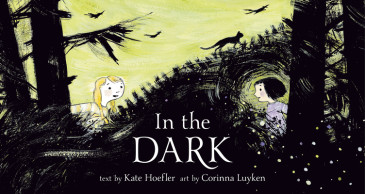
In the Dark is a story of shifting perspectives told through a unique book design. The reader turns the tall and narrow book horizontally to follow two parallel stories that slowly merge.
At the beginning of the book, the top spread gives the perspective of townsfolk who discover others in the woods, whom they suspect are witches. The bottom spread is from the perspective of the others who are not, in fact, witches at all. Their suspicious cloaks and brooms are actually cloth and wooden handles for flying bird kites.
Toward the middle of the book, the dual perspectives begin to overlap, challenging readers to interpret the shifting pronouns “they” and “we.” By the end of the book, both stories have merged on the full-page spreads. Corinna Luyken’s mixed-media art, rendered in a dark palette of purples, blacks, golds and greens, also shifts and becomes more vibrant as different perspectives evolve into mutual understanding.
In the Dark garnered a starred review from Booklist. It was named a Bank Street College Best Children’s Book and a Favorite Children’s Book by the Marginalian.
This intriguing picturebook engages readers in critical thinking as they are challenged to make sense of the shifting perspectives. The story offers readers a variety of themes to explore, such as suspicion versus reality, dark versus light and how to dismantle prejudice and bridge misunderstandings.
The Bridge
By the celebrated Swedish author-illustrator Eva Lindström, translated by Annie Prime. Astra Young Readers, an imprint of Penguin Random House, 2023.
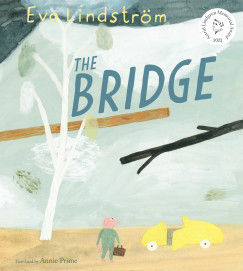
The Bridge is a wholly original story that is both mysterious and unsettling. A pig is driving along an isolated road in the wilderness when they are stopped by a wolf, who informs them that the bridge ahead is closed.
The wolf invites the pig to wait at their home, which they share with a second wolf. The three characters drink coffee and eat pastries together, talking about innocuous things like a painting of a bridge hanging on the wall. The pig asks if the wolves ever get lonely living in the middle of nowhere. They reply in the negative, explaining that they get visitors from time to time.
At this point in the story, the suspicions about the wolves’ intentions, which have likely been growing in the reader’s mind, start ringing alarm bells. The bells ring even louder when the reader notices an axe through the window. But then the first wolf abruptly says the bridge should be fixed and sends the pig safely on their way.
After driving awhile, the pig stops and asks a bird for directions to the bridge. The bird says, “There is no bridge here.” And that’s the end of the story! This surprising twist invites the reader to re-examine the entire story through that startling reveal.
Lindström’s gouache and watercolor illustrations are rendered with a pale wash, adding an eerie tone to the spare story, which is told entirely through dialogue.
Eva Lindström was awarded the prestigious Astrid Lindgren Memorial Award in 2022, won the Swedish August Prize in 2013 and has been nominated for the Hans Christian Andersen Award.
A story that subverts reader expectations is one that lends itself to deep meaning-making. Readers can reframe what they thought they knew about the story through the lens of the nonexistent bridge, examining their assumptions about and influences of common tropes of wolves and pigs in folk tales.
The Great Grrrrr
Written by Marie-Sabine Roger, illustrated by Marjolaine Leray, translated by Angus Yuen-Killick. Red Comet Press, 2023.
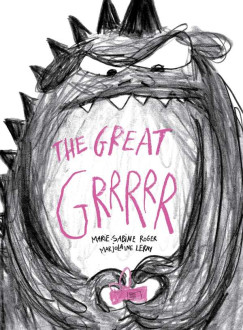
In The Great Grrrrr, the titular character runs the Great Grrrrr Express, which guarantees delivery in minutes. Early one morning, he brings a little wrapped package to a pretty cottage. No one answers his increasingly impatient ringing of the doorbell.
As he waits, rain starts to fall, and he grows impatient and angry, growling and grumbling until he kicks the door so hard that the entire house collapses into a heap. A very, very old grandma slowly approaches the scene, and when she sees the little package, she smiles because she knows it’s a present from her grandchildren for her 99th birthday.
She delightedly unwraps a magnifying glass (since she can’t see well), along with romance and adventure novels. She thanks the Great Grrrrr, complimenting him on his patience and offering him some hot chocolate. Her kindness dissolves his anger, and the final wordless spread shows the grandma using her new magnifying glass to read one of her birthday books in the Great Grrrrr Express, while the Great Grrrrr himself rebuilds her cottage.
The humor in this French import, translated by Angus Yuen-Killick (the founder and publisher of Red Comet Press), leaps off the page. Marjolaine Leray’s expressive crayon drawings, sketched in a two-tone color palette of grays and neon pink, exude drama and emotion. A range of the Great Grrrrr’s facial expressions are captured on the endpapers.
Ellen Myrick, president and chief marketer of Publisher Spotlight, declares the book, “born for storytimes.” Marie-Sabine Roger has received numerous French literature prizes and awards and several of her adult novels have been adapted for the screen. Marjolaine Leray works across a variety of art forms, from drawing, to photography, to animation, to graphic design.
Young readers will be able to relate to the Great Grrrrr’s feelings of impatience and anger. They can discuss the consequences of his emotional outbursts and how he makes amends with the grandma. Readers can also analyze how Leray’s artistic style heightens the dramatic elements of the story.
How to Count to 1
Written by Caspar Salmon, illustrated by Matt Hunt. The Nosy Crow, 2023.
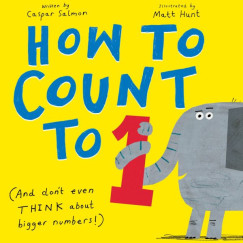
How to Count to 1: (And don’t even THINK about bigger numbers!) begins like a typical counting book, inviting the reader to count one apple and then one elephant. But things quickly turn silly.
On the next page, there are two whales, and the reader is asked: “How many…SAUSAGES do you see?” Lo and behold, there is just one sausage floating on a whale’s spout.
Each page adds another object but only one item that the tricky narrator directs the reader to count (only one of the five ducks is rollerblading).
At the end of the book, there is one final question: “How many goldfish do you see?” There are two pictured, and when you turn the page, the narrator yells, “WAIT – NO! DON’T SAY ‘TWO!’ I meant to say, ‘How many goldfish are wearing glasses?’ BUT I MADE A MISTAKE!”
The interactive book makes a hilarious and engaging read-aloud. Matt Hunt’s whimsical illustrations pop off the page in a primary school palette. The endpapers offer a fun treat; there are 100 colorful things for the reader to count!
Booklist and Kirkus Reviews both gave the book starred reviews. How to Count to 1 is part of Nosy Crow’s Stories Aloud program. Readers can scan a QR code on the back cover to listen to a free audio reading of the counting book.
Readers can work together to deconstruct the unique structure of How to Count to 1 and how it sets up the surprising joke at the end. They can also use How to Count to 1 as a fun writing springboard to create their own wacky counting book, choosing only one number to count and then manipulating the pictures to make sure the reader only says that number.
My Strange Shrinking Parents: A Tall Tale
Written and illustrated by Australian creator Zeno Sworder. Thames & Hudson, 2023.
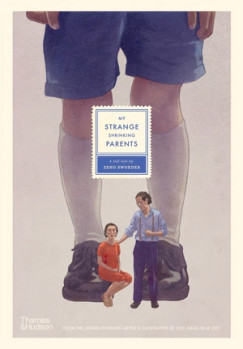
My Strange Shrinking Parents: A Tall Tale is inspired by his immigrant parents, to whom he dedicates the book, and their sacrifices for their family. The beginning of the story is told from the perspective of a young child, whose immigrant parents struggle to make ends meet.
To give him the same opportunities as other children, they trade a bit of their height, beginning with two inches for a beautiful cake to celebrate his third birthday. Over the years, the boy grows taller, while his parents grow ever smaller from their bargaining, until they are as tall as teacups.
When the grown boy starts a family of his own and no longer needs the sacrifice of his parents’ height, he builds a doll-sized house for them.
A brief note at the end of the story explains the foundations of the imagined story: “… a fairytale woven together with memory.” The muted tones of Sworder’s pencil-and-watercolor illustrations, inspired by Japanese woodblock prints, are atmospheric and imbued with heartfelt emotion.
Sworder’s poignant story garnered starred reviews from Kirkus Reviews and Shelf Awareness. On the copyright page, the author shared that he drew inspiration from Oscar Wilde, Shel Silverstein and Stan Sakai, whose “… pictures and words have helped me to both lose myself and find myself.”
There are many parallels for readers to uncover, such as a lullaby sung by the mother to her son at the beginning of the story and then sung by the son to his parents at the end. Little surprises, like hidden Easter eggs, are embedded in the illustrations for observant readers to find, such as tiny red teacups. The story offers readers a deeply complex and haunting metaphor to analyze — one that portrays the power of unconditional love.
Papá's Magical Water-Jug Clock
Written by Jesús Trejo, illustrated by Eliza Kinkz. Minerva, an imprint of Astra Publishing House, 2023.

In Papá's Magical Water-Jug Clock, Jesús helps Papá with their family gardening business. His special job is to oversee the magical water-jug clock. This magic clock tells how much work is left; when the jug is empty, the work is done for the day!
At each new yard, the father-son team works hard in the hot sun. Jesús drinks a great deal of water, and he shares it liberally with thirsty cats, dogs and peacocks. Papá is surprised when the water-jug is empty at only 10:30 in the morning! He explains that the clock isn’t really magical, he was just trying to make the workday fun since their family business is such hard work.
They refill the water-jug, and Jesús learns a valuable lesson that time and water are both precious. The clock may not be magical, but he and his dad certainly make a magical team.
Eliza Kinkz’s colorful illustrations, executed with pencil, ink, watercolor, gouache and crayon, are lively and humorous, matching the energy of Jesús. Spanish words and speech bubbles are woven seamlessly throughout the story.
Papá's Magical Water-Jug Clock won both a Pura Belpré Author and Illustrator Honor Award, and it was named a recommended title by the Charlotte Huck Award for Outstanding Fiction for Children. The book also garnered starred reviews from Kirkus Reviews, Publishers Weekly and School Library Journal.
The heart-warming story of Jesús and Papá offers readers rich opportunities to build conversations about their father-son relationship, the true nature of the water-jug clock and lessons learned about the precious commodities of water and time.
Lisa Pinkerton is an associate clinical professor in the Department of Teaching and Learning within the College of Education and Human Ecology. She specializes in early literacy and literature for children and young adults.

